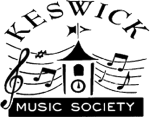Concert Reviews
2024/25 season 4th concert at St. John’s, Saturday February 1st 2025, the Korros Ensemble
Read More »Theatre by the Lake – Review by Steve Matthews of Brompton Quartet playing Haydn, Mozart, Shostakovich
“The Haydn’s bonkers,” said Edward Keenan, the viola player in The Brompton Quartet. And he was right. The playful, agitated, quizzical, quirky questioning of the opening phrases of Haydn’s String…
Review of Keswick Music Society Concert, Theatre by the Lake – Harriet Mackenzie, violin, and James Boyd, guitar.
The violin and guitar are complementary instruments. The violinist bows the melody, flowing, resonant, singing, with a powerful voice. The guitarist plucks the harmony, rhythmic, complex, with an intimate, thoughtful…
March 14th 2023 Theatre by the Lake Review by Steve Matthews of Bella Tromba
Four trumpeters – Jo Harris, Emma Bassett, Clara Hyder and Emily Ashby – and on stage ten, perhaps a dozen trumpets – in C, in B flat, bass trumpets and…
Review of the Keswick Music Society Concert given by the Primrose Piano Trio at St. John’s Church Keswick.
Tonight, the famous Primrose Quartet became the Primrose Trio. However, first it was minus two. They were reduced to Susanne Stanzeleit on violin and Andrew Fuller on cello, but they…
The Scott Brothers Duo – organ and piano – Keswick Music Society concert St John’s Keswick.
Two brothers, both in black, sitting with their backs to each other: one, Thomas Scott, at the keyboard of the Steinway grand with the lid defiantly open, and the other,…
Keswick Music Society: The Odysseus Trio at St John’s Church.
Three centuries, three countries, three composers and three performers playing three piano trios. Haydn’s last piano trio was written in Vienna when he was 64 in 1796. Faure was 78…
An Opera Evening by Wild Arts
A Night of Celebrations A large, and entranced, audience, went to listen to Keswick Music Society’s presentation of Wild Art’s Opera Evening at the Theatre on the Lake on Saturday….
Sophie Rosa and Ian Buckle
On Saturday March 5th, an enthusiastic audience came to listen to Keswick Music Society’s first concert of their Spring 2022 programme at St. John’s Church. Sophie Rosa, violin, and Ian…
Review of Elmore Quartet Concert by John Hughes
The centrepiece of the concert was Benjamin Britten’s String Quartet No. 3 which was first performed just after the composer’s death in 1976. Hearing a live chamber music performance again…
Elmore SQ Review
A happy and enthusiastic audience of members of Keswick Music Society and friends gathered at St. John’s Church Keswick on Saturday evening for their first live post-Covid concert. Ever since…
